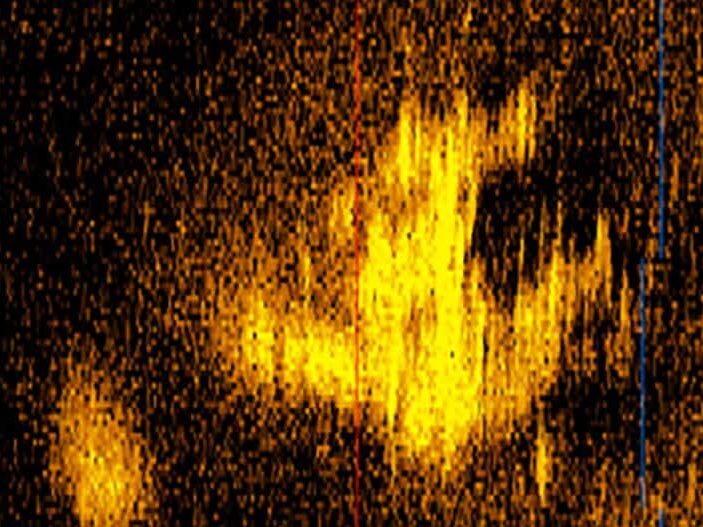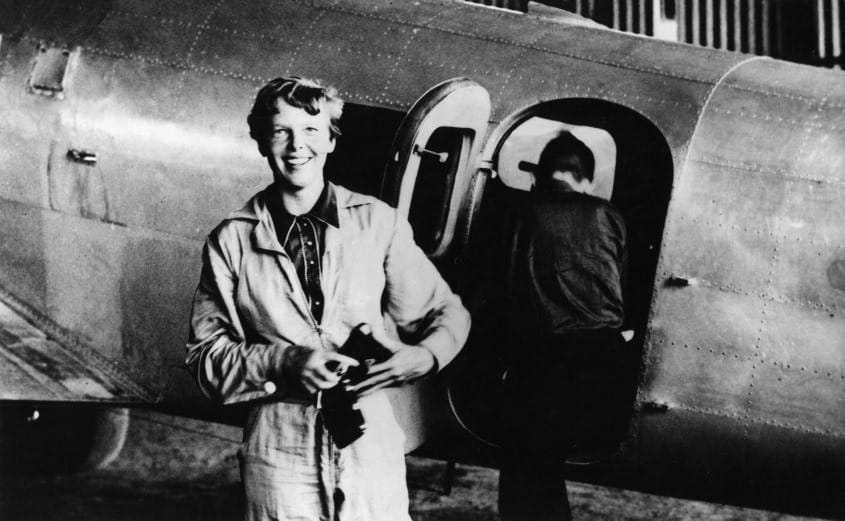A potentially groundbreaking discovery nearly 90 years after the event could finally resolve the enigmatic disappearance of pioneering aviator Amelia Earhart, who vanished over the Pacific in 1937.
This long-standing mystery has captivated historians, researchers, and the public alike, marking one of the 20th century’s most enduring aviation puzzles.
Table of Contents
Key Points
- On January 28, 2024, marine robotics company Deep Sea Vision reported discovering what appears to be Amelia Earhart’s lost Lockheed Electra airplane using advanced sonar technology.
- The wreckage was detected over 16,000 feet deep in the Pacific Ocean near Howland Island, along Earhart’s planned 1937 flight path.
- Deep Sea Vision president Tony Romeo stated the sonar image shows an aircraft of the correct dimensions and with distinctive twin tails matching Earhart’s plane.
- If definitively identified as Earhart’s Electra, Deep Sea Vision intends to retrieve the aircraft for restoration and to finally complete her storied global flight.

Amelia Earhart was a pioneering American aviator who gained international fame in the 1930s for her record-breaking flights. In 1937, she attempted to become the first woman to fly around the world along the equator in her Lockheed Electra airplane.
On July 2, Earhart and navigator Fred Noonan took off from New Guinea en route to tiny Howland Island in the Pacific. After radioing that she was low on fuel near Howland, Earhart’s plane vanished without a trace, spawning years of searches and speculation.
Breakthrough Discovery of the Wreckage?
On January 28, 2024, the marine technology company Deep Sea Vision announced a likely discovery of Earhart’s downed Electra deep in the Pacific, not far from Howland Island.
The U.S. aviation pioneer’s resting place may finally have been found after nearly a century of speculation and false leads.
Company president Tony Romeo reported sonar images depicting an aircraft-like object approximately 100 miles from Howland at a depth of over 16,000 feet.
The distinctive shape and length matches Earhart’s twin-tailed Lockheed Electra 10E. No other missing planes have been documented in that deep area.
What differentiates this finding is Deep Sea Vision’s advanced sonar equipment, enabling scans at greater depths and ranges than earlier searches.
The company dragged underwater drones methodically for 90 days before discovering the anomaly far below after examining collected data.
According to lead explorer Romeo, the sonar image presents a swept-wing appearance due to distortion at extreme depth, but the craft’s dimensions precisely match the Electra.
His team plans to return soon for clearer scans, photographs, and video that may conclusively identify the sunken plane.
Romeo stated he welcomes analysis, not claiming outright they have located Earhart’s final resting place. However, evidence heavily suggests the long-lost wreckage may soon provide answers.
If confirmed, Deep Sea Vision intends retrieving the Electra for restoration to complete Earhart’s aborted global flight, showcased in the Smithsonian Institution. After this potential breakthrough, one of history’s greatest mysteries may finally be put to rest.

Amelia Earhart’s Pioneering Career
Born in 1897 in Atchison, Kansas, Amelia Earhart was a pioneer in aviation who became internationally famous in 1928 for being the first woman to fly across the Atlantic Ocean.
She solidified her celebrity status in 1932 when she made a daring, non-stop solo flight across the Atlantic in her Lockheed Vega 5B, earning the United States’ Distinguished Flying Cross.
A friend of First Lady Eleanor Roosevelt, Earhart used her platform to advocate for women’s rights and advancement during the 1920s and 30s. After getting hooked on aviation in her early 20s, she worked assorted jobs to earn money for flying lessons, against the advice of her instructor.
She bought her first plane – a bright yellow Kinner Airster biplane – and quickly made history, setting a women’s altitude record of 14,000 feet.
Earhart obtained her pilot’s license in 1923, becoming the 16th woman to ever receive one from the Fédération Aéronautique Internationale. She famously chopped her hair short in the style of other intrepid female pilots of the era.
In 1931, she married publisher and writer George Putnam, who became her promoter and manager. The pair formed an effective partnership that furthered Earhart’s career.
The 1937 Flight and Disappearance
In 1937, Earhart attempted the daring challenge of becoming the first woman to circumnavigate the globe by airplane. She planned to fly a technologically advanced Lockheed L-10 Electra, funded by Purdue University, where she worked as a career counselor and visiting professor.
Earhart and her navigator Fred Noonan departed Miami on June 1, flying eastbound across the Atlantic Ocean, then Africa, the Middle East, India, Southeast Asia and Australia. After completing 22,000 miles, they arrived at Lae, New Guinea on June 29, 1937 for the most perilous leg across the Pacific.
On July 2, 1937 at 10am local time, Earhart and Noonan took off from Lae’s slick runway. Their Electra was filled to capacity with 1,100 gallons of fuel for the 2,556 mile flight to tiny Howland Island, located between Hawaii and Australia.
According to plan, they would land on Howland the next day, July 3, having crossed the International Date Line, yet still keeping the date as July 2.
Approximately 800 miles into the flight, Earhart reported her position near the Nukumanu Islands. Crew members on the USCGC Itasca, stationed at Howland Island, received transmissions from her plane as it neared the target destination early on July 2.
Earhart’s last confirmed radio transmission stated she was 100 miles out from Howland, running low on fuel while struggling with clouds and mechanical issues.
Despite radio contact, she apparently could not hear the Itasca’s replies. No definitive sighting of Earhart’s Electra or its occupants was verified after the final transmission.
Massive sea and air searches commenced, exploring over 150,000 square miles of ocean. No trace of the lost plane emerged.
Earhart’s disappearance ignited theories ranging from capture by the Japanese military to alien abduction, but credible evidence has never materialized. Until now possibly.
Experts Cautiously Optimistic About Possible Earhart Plane Discovery
The discovery by Tony Romeo’s Deep Sea Vision of an object resembling Amelia Earhart’s plane has sparked optimism in the long-standing mystery of her disappearance. Advanced sonar technology revealed an object matching the dimensions and distinct twin-tail design of Earhart’s aircraft. While Romeo remains cautiously hopeful, the definitive identification awaits further investigation.
David Jourdan of Nauticos acknowledged the object’s aircraft-like features from the sonar images but emphasized the need for visual confirmation through camera inspection before claiming it as Earhart’s plane.
Ric Gillespie of The International Group for Historic Aircraft Recovery offered a skeptical view, suggesting Earhart’s plane likely disintegrated after a remote Pacific island landing, challenging the notion that the mystery remains unsolved.
Conversely, aviation crash investigator Gary LaPook considers the find near Howland Island promising, aligning with historical radio transmissions indicating Earhart was low on fuel in the area, countering other crash theories.
As the Deep Sea Vision team prepares for a follow-up expedition, the potential identification of the wreckage as Earhart’s Electra could finally unravel one of aviation’s most enduring mysteries.